
The ring-necked duck is a diving duck from North America commonly found in freshwater ponds and lakes. The scientific name is derived from Greek aithuia, an unidentified seabird mentioned by authors including Hesychius and Aristotle, and Latin collaris, "of the neck" from collum, "neck".
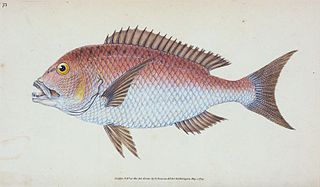
Edward Donovan was an Anglo-Irish writer, natural history illustrator, and amateur zoologist. He did not travel, but collected, described and illustrated many species based on the collections of other naturalists. His many books were successful in his time. He died penniless in 1837 leaving a large family destitute.

Geitoneura klugii, the common xenica or Klug's xenica, is a species of butterfly belonging to the family Nymphalidae. It is a southern Australian butterfly that is easily camouflaged because of its resemblance to the ground where it is usually found fluttering. It has a wingspan of about 38 millimetres (1.5 in). The upper and lower side of the forewing is black with brownish-black markings and contains a black spot with a white centre. The orange hindwing is set off by a black border and a black-rimmed eyespot. The underside of the hindwing ranges from grey to brown and consists of darker markings.
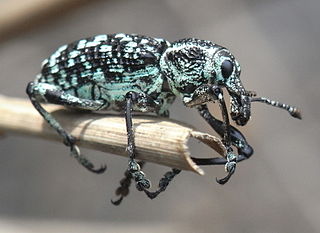
Chrysolopus spectabilis is a species of weevil found in south-eastern Australia. It was discovered during James Cook's first voyage, and became one of the first insects to be described from Australia. The weevil measures up to 25 mm (1.0 in) long and includes distinctive metallic green and black scales. It is found only on 28 species of the plant genus Acacia.

The punctate flower chafer or spotted flower chafer, Neorrhina punctata, is a species of flower chafer. The chafers are beetles of subfamily Cetoniinae in the large scarab beetle family (Scarabaeidae). Among the chafers, N. punctatum belongs to the tribe Schizorhinini.

Ardices curvata, the crimson tiger moth, is a moth of the family Erebidae. It was first described by Edward Donovan in 1805 and it is found in Australia. The species was formerly included in Spilosoma, but later generic status of Ardices was proved by Vladimir Viktorovitch Dubatolov (2005).

Epicoma tristis, the dark epicoma, is a moth of the family Notodontidae first described by Edward Donovan in 1805. It is found in Australia.
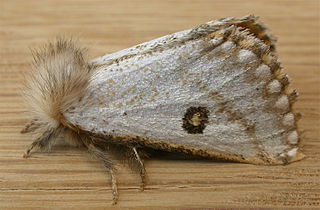
Epicoma melanosticta is a moth of the family Notodontidae first described by Edward Donovan in 1805. It is found in Australia, including Tasmania.
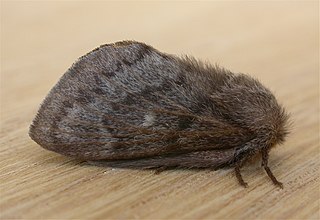
Pernattia pusilla, the she-oak moth, is a species of moth of the family Lasiocampidae. It was described by Edward Donovan in 1805 and is found along the coast of eastern Australia.
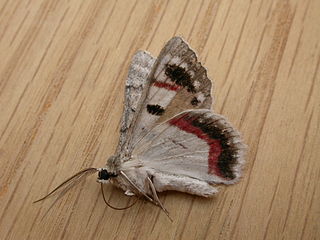
Crypsiphona ocultaria the red-lined looper moth or red-lined geometer, is a moth of the family Geometridae. The species was first described by Edward Donovan in 1805 and it is found in Australia.

Cyclochila australasiae is a species of cicada and one of Australia's most familiar insects. It is distributed through coastal regions of southeastern Australia. Green specimens are commonly known as green grocers and yellow ones as yellow mondays.
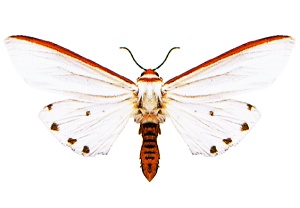
Paramsacta marginata, also called Donovan's tiger moth or Donovan's amsacta, is a moth of the family Erebidae. It is found in most of Australia, New Guinea, Fergusson Island and the Louisiade Archipelago. The species was first described by Edward Donovan in 1805.
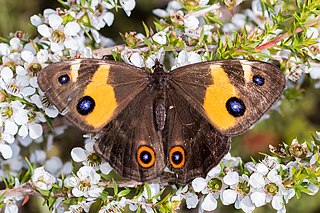
Tisiphone abeona, the swordgrass brown, is a nymphalid butterfly. It is endemic to Australia.

Geitoneura is a genus of nymphalid butterflies, commonly known as xenicas. The genus contains three species.
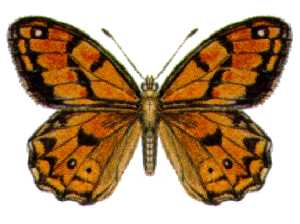
Geitoneura minyas, the western xenica, is a species of butterfly from the family Nymphalidae, found in the south-west of the Australian state of Western Australia.

Anoplognathus viridiaeneus, commonly known as the king Christmas beetle, is a beetle of the family Scarabaeidae native to eastern Australia. The largest Christmas beetle, it can be over 3 centimetres (1.2 in) long.

Commius elegans is a species of shield bug in the tribe Diemeniini found in eastern Australia.

















